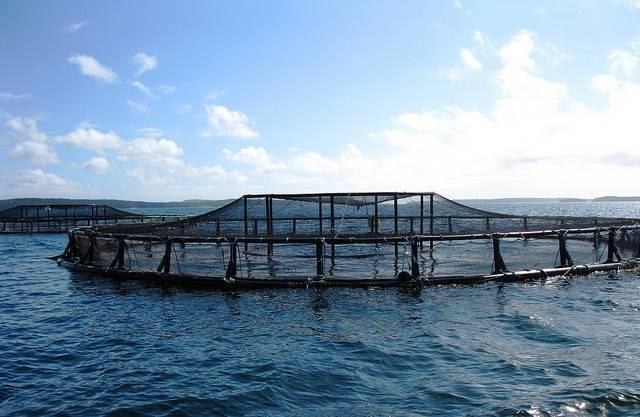
Animal welfare activists have scored many victories in recent years as they have convinced more companies to stamp out cruelty in their supply chains. The results have been, at a minimum, a better quality of life for some chickens, pigs and cows.
Now, the NGO Mercy for Animals says it is time for this thinking to apply to fish, especially as aquaculture becomes more important to the global seafood supply.
Whether fish feel pain or stress has long been debated. PETA highlights scientific research that concludes fish indeed come under duress when they are caught on hooks or speared. Other research suggests fish do not feel the pain humans or other animals do. But that has not swayed the opinions of leading activists including Paul McCartney, who almost a decade ago appeared in a video that gave a scathing indictment of the global meat industry – and his narration included fish.
From Mercy for Animals’ point of view, fishing in any form is cruel to our gill-bearing friends. But the organization has especially had the knives out for factory fishing, citing an article last week in the New York Times that highlights research suggesting fish can suffer from stress and depression.
Sea lice, an endemic problem in many salmon aquaculture operations, is one way in which fish can suffer. Sea lice are big business. Several reports over the past year have estimated that the farmed salmon fishing industry has lost at least $1 billion this year alone on treatments. In addition to vexing aquaculture farmers, sea lice, long documented by various journalists, have also exacted cruelty on fish as well. PETA has long echoed these concerns, and has described sea lice as a “death crown” for salmon, largely due to allegations that these fish are far too crammed at many aquaculture facilities.
Organizations such as the Human Society have insisted that many aquaculture practices need to stop as they inflict unnecessary pain on fish. A study the group had commissioned urged seafood companies to end gill-cutting without prior stunning, asphyxiation in the air or on ice, carbon-dioxide stunning and live chilling.
Mercy for Animals calls for the end of fish cruelty with a call to consumers to switch to a vegan diet. Considering the growth of the global middle class and the continued surge demand for protein, that will be a tall order. But just as in the case with “fake chicken” and beef substitutes, cruelty-free options to seafood could become a more viable option as they scale and improve in quality. Algae-based products could help new seafood alternatives become more acceptable to consumers. Meanwhile, the seafood industry appears to be ready to have a frank discussion of this problem. The outcome would not only be a relief for oceans’ ecosystems, but a more ethical supply chain that currently is rife with abuses could result as well.
Image credit: NOAA/Flickr

Leon Kaye has written for 3p since 2010 and become executive editor in 2018. His previous work includes writing for the Guardian as well as other online and print publications. In addition, he's worked in sales executive roles within technology and financial research companies, as well as for a public relations firm, for which he consulted with one of the globe’s leading sustainability initiatives. Currently living in Central California, he’s traveled to 70-plus countries and has lived and worked in South Korea, the United Arab Emirates and Uruguay.
Leon’s an alum of Fresno State, the University of Maryland, Baltimore County and the University of Southern California's Marshall Business School. He enjoys traveling abroad as well as exploring California’s Central Coast and the Sierra Nevadas.














